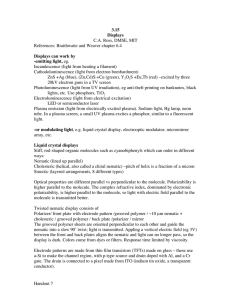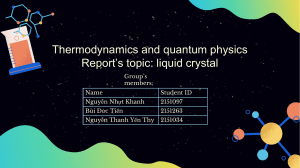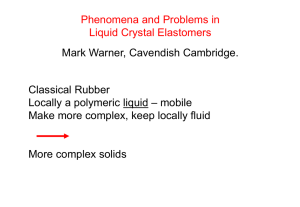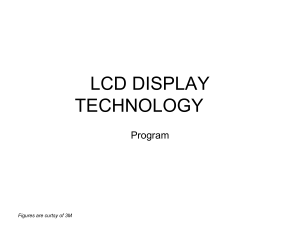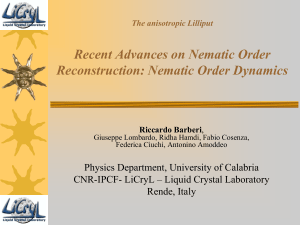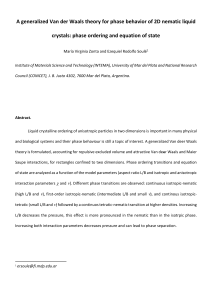LIQUID CRYSTAL DISPLAY (LCD)
advertisement
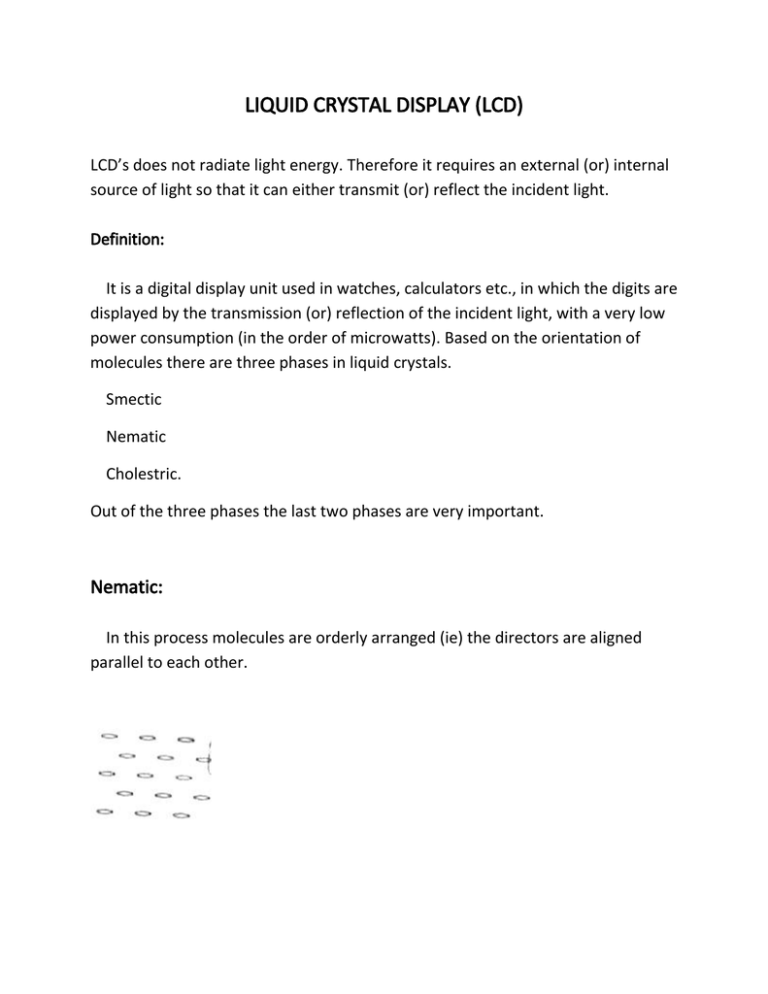
LIQUID CRYSTAL DISPLAY (LCD) LCD’s does not radiate light energy. Therefore it requires an external (or) internal source of light so that it can either transmit (or) reflect the incident light. Definition: It is a digital display unit used in watches, calculators etc., in which the digits are displayed by the transmission (or) reflection of the incident light, with a very low power consumption (in the order of microwatts). Based on the orientation of molecules there are three phases in liquid crystals. Smectic Nematic Cholestric. Out of the three phases the last two phases are very important. Nematic: In this process molecules are orderly arranged (ie) the directors are aligned parallel to each other. Cholestric phase: In Cholestric phase the molecules are orderly arranged similar to Nematic phase but in planes. Here the only difference is the orientation will differ from one plane to another. The distance between the similar planes in which the molecules has same director is called pitch. The Cholestric liquid crystal has a special property that, if white light is allowed to pass through the crystal it appears coloured. Types of LCD’s: Nematic phase is widely used for displays. There are two types of LCD’s in use. 1. Dynamic scattering displays. 2. Twisted Nematic displays. Source : http://mediatoget.blogspot.in/2011/08/liquid-crystal-display-lcd.html
